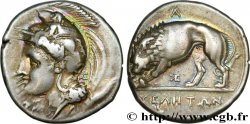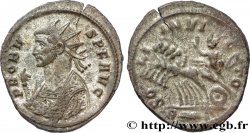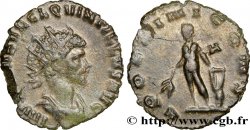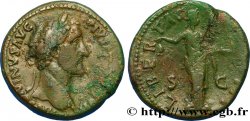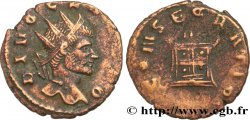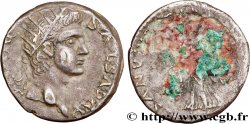Live auction - bgr_520044 - LUCANIA - VELIA Nomos, statère ou didrachme
Devi Sign-in ed essere un offerente approvato fare un'offerta, Login per fare offerte. Conti sono soggetti ad approvazione e di approvazione sono raggiunti entro 48 ore. Non aspettare fino al giorno di una vendita si chiude per registrarti.Confermando la tua offerta su questo oggetto ti impegni ad un contratto legalmente vincolante per l'acquisto di questo prodotto e fare clic su «offerta» costituisce accettazione dei termini di utilizzo de live auctions cgb.fr.
Offerta deve essere collocato in euro gli importi interi vendita only.The si chiuderà al momento sulla descrizione dell'oggetto, eventuali offerte pervenute al sito dopo l'orario di chiusura non verranno eseguite. Volte transmition possono variare e le offerte potrebbero essere respinto se si attende per gli ultimi secondi. Per ulteriori informazioni ckeck le FAQ Live auction.
Le offerte vincenti saranno sottomesse ai 18% per spese di compartecipazione alla vendita.
Le offerte vincenti saranno sottomesse ai 18% per spese di compartecipazione alla vendita.
| Valutazione : | 550 € |
| Prezzo : | no offerta |
| Offerta maxima : | no offerta |
| Data di fine vendita : | 29 gennaio 2019 14:05:00 |
Tipo : Nomos, statère ou didrachme
Data: c. 350/340 - 320/310 AC.
Nome della officina / città: Vélia, Lucanie
Metallo : argento
Diametro : 20 mm
Asse di coniazione : 6 h.
Peso : 7,49 g.
Grado di rarità : R1
Commenti sullo stato di conservazione:
Exemplaire sur un flan ovale bien centré des deux côtés. Belle tête d’Athéna. Joli revers. Belle patine de médaillier avec des reflets dorés irisés bleutés
N° nelle opere di riferimento :
Diritto
Titolatura diritto : ANÉPIGRAPHE ; MONOGRAMME DERRIÈRE LE CASQUE.
Descrittivo diritto : Tête d'Athéna à gauche, coiffée du casque phrygien à cimier avec triple aigrette, orné d'un centaure.
Legenda diritto : (KE)
Rovescio
Descrittivo rovescio : Lion passant à gauche, dévorant une proie.
Legenda rovescio : ULHTWN/ A/ (KE)
Commento
De mêmes coins que les exemplaires de l’Ashmolean Museum d’Oxford (SNG Oxford, 1279 à 1281). La série 60 du classement de Williams se caractérise par un monogramme qui correspond à la signature du graveur Kléodoros. Sur cet exemplaire, on distingue très nettement un début de cassure de coin au droit devant le visage. Au revers, on remarque la présence de deux minuscules points devant l’antérieur et sous la queue. Très tôt, le monnayage de Vélia a été décrit comme ayant inspiré la drachme lourde de Marseille (LT. 785-791). Certains l’ont même décrit comme un monnayage symmachique : un lion de Vélia étant l’équivalent de deux lions de Marseille. Aujourd’hui, cette théorie est remise en cause.
Same dies as the examples in the Ashmolean Museum in Oxford (SNG Oxford, 1279 to 1281). Series 60 of the Williams classification is characterized by a monogram that corresponds to the signature of the engraver Kleodoros. On this example, we can clearly see the beginnings of a die break on the obverse in front of the face. On the reverse, we note the presence of two tiny dots in front of the fore-end and under the tail. Very early on, the coinage of Velia was described as having inspired the heavy drachma of Marseille (LT. 785-791). Some have even described it as a symmachic coinage: one lion of Velia being the equivalent of two lions of Marseille. Today, this theory is being challenged
Same dies as the examples in the Ashmolean Museum in Oxford (SNG Oxford, 1279 to 1281). Series 60 of the Williams classification is characterized by a monogram that corresponds to the signature of the engraver Kleodoros. On this example, we can clearly see the beginnings of a die break on the obverse in front of the face. On the reverse, we note the presence of two tiny dots in front of the fore-end and under the tail. Very early on, the coinage of Velia was described as having inspired the heavy drachma of Marseille (LT. 785-791). Some have even described it as a symmachic coinage: one lion of Velia being the equivalent of two lions of Marseille. Today, this theory is being challenged








 Segnalare un errore
Segnalare un errore Stampate la pagina
Stampate la pagina Condividi mia selezione
Condividi mia selezione Fai una domanda
Fai una domanda Consegnare / vendere
Consegnare / vendere
 Descrittivo
Descrittivo




